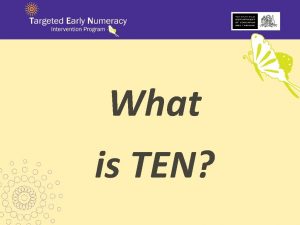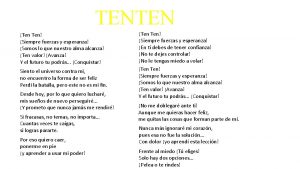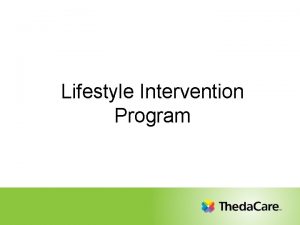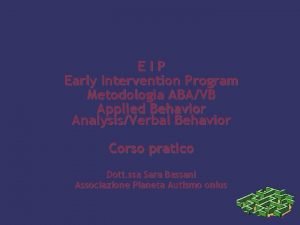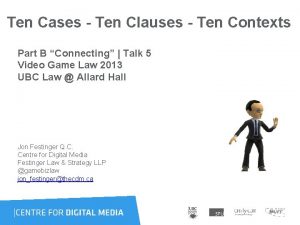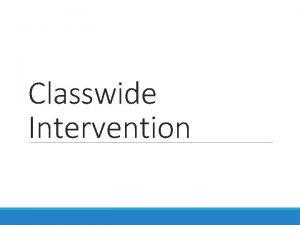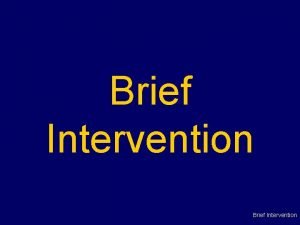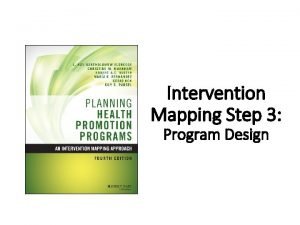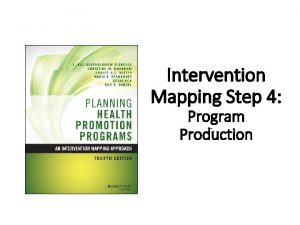What is TEN Intervention program to support K2











- Slides: 11

What is TEN?

Intervention program to support K-2 TEN – Targeted Early Numeracy Overview of TEN Short, sharp bursts of teaching Students improvements are monitored against the Best Start early numeracy continuum TEN grew out of the Best Start Assessment program Clear targets for teachers and schools around number expectations

TEN Focus • The Target Early Numeracy Intervention program (TEN) Compliments the regular numeracy programs, Best Start and Count Me In Too. • It is recognised that a small percentage of students are at risk of numeracy failure, despite a high quality, whole class numeracy program. • The TEN program is not based on a withdrawal model. • Teachers are supported in developing a class program which incorporates short, focused and frequent opportunities designed to increase the rate and proficiency of numeracy learning for targeted students.

The Program Will: • Help to monitor students’ rate of progress. • Support the teaching needed to move students beyond the broad targets. • Track students’ response to the intervention.

TEN Model • An Early Learning Plan • Smaller group sizes • Short, focused, frequent lessons (10 min blocks) • Strategically targeted activities • Explicit and systematic teaching • 5 weekly assessments • The program is to be implemented within a daily lesson block without withdrawal or a specialist teacher.

Class Teachers will: • Identify a possible intervention group within their classroom • Administer the assessment to the possible intervention group • Analyse the response of the students • Place the students on the E. L. P • Monitor the progress of the targeted students every 5 weeks • Give the class data to the coordinator to send to the TEN Facilitator • Work with a mentor and the coordinator to negotiate professional learning and in class support

Which students make up the targeted intervention group? Broad targets have been set to assist teachers in identifying students for participation in the program • All Kindergarten students will be at least perceptual counting stage in the range to 20 by the end of the year • All year 1 students will be at least figurative counting stage across the decade (9+4) by the end of the year • All year 2 students will be at least counting on and back stage in the range to 30 by the end of the year




Whole Class Focus / Concept NS 1. 2 Uses a range of mental strategies and informal recording methods for addition and subtraction involving one- and two-digit Develop a range of mental strategies and informal recording methods for addition and subtraction numbers Key Ideas Doubles Whole class warm up activities Count forwards from any number Count backwards from any number What’s missing? Making numbers –groups of ten. Talk about tens and units Count by 10 s, 2 s, 5 s and by tens on and off the decade Rabbits Ears Count on bucket – have a bucket, say to the children there are 12 teddies in the bucket lets count on , drop more in the bucket Whole Class Introduction; • Discuss what the term “Doubles” means • Use fingers to show doubles to 10 • As a whole class play DOUBLE DICE – students are given unifix cubes (20) Pick a student to roll the large ten sided dice in the middle of the classroom. If a student rolls a 6 students make two towers of 6 cubes and count the total. Teacher writes on the board 6+6 = 12 or say double 6 is 12 Closure: • Discuss how students worked out doubles for the games – Did they use their fingers? • Play - Who’s the champion? or “DOUBLE ARCHERY” on the interactive whiteboard Group Rotations • Teddy Race – to 12 (extension to 20) • Brainy Fish - (extension with spinner) • Do I Risk It? • Double Bingo ( Extension - Doubles +1) TEN INTERVENTION GROUP 2 Dice Roll ( instead of Do I Risk It? )
 Targeted early numeracy intervention program
Targeted early numeracy intervention program Am i a 10/10
Am i a 10/10 Twenty past ten
Twenty past ten Ten ten siempre fuerzas y esperanza
Ten ten siempre fuerzas y esperanza National program related to children
National program related to children Fvip georgia
Fvip georgia Rdi relationship development intervention program
Rdi relationship development intervention program Thedacare lifestyle intervention program
Thedacare lifestyle intervention program Fvip georgia
Fvip georgia Eip early intervention program
Eip early intervention program Peer intervention program
Peer intervention program Minor details examples
Minor details examples
